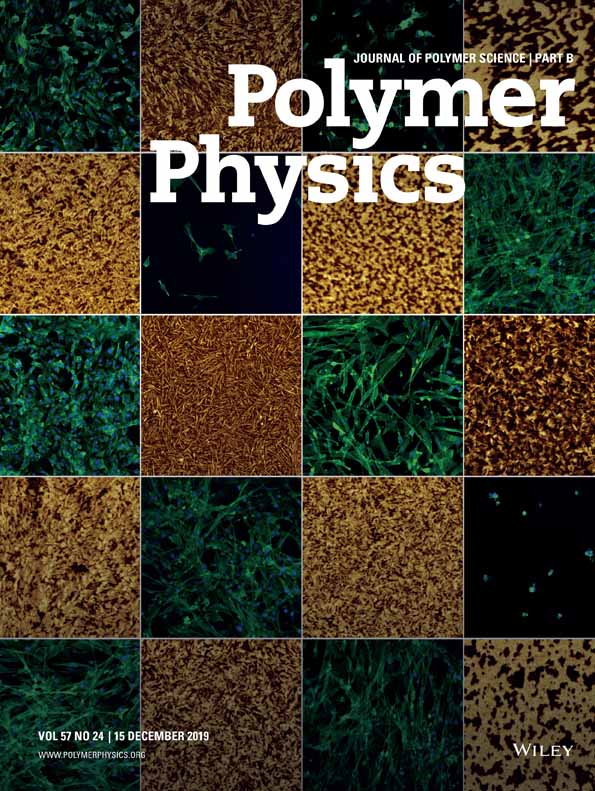Molecular relaxation of isotactic polystyrene: Real-time dielectric spectroscopy and X-ray scattering studies*
Contribution from the March 2003 Meeting of the American Physical Society—Division of Polymer Physics, Austin, TX
Abstract
The molecular relaxation processes and structure of isotactic polystyrene (iPS) films were investigated with real-time dielectric spectroscopy and simultaneous wide- and small-angle X-ray scattering. The purpose of this work was to explore the restrictions imposed on molecular mobility in the vicinity of the α relaxation (glass transition) for crystallized iPS. Isothermal cold crystallization at temperatures of Tc = 140 or 170 °C resulted in a sigmoidal increase of crystallinity with crystallization time. The glass-transition temperature (Tg), determined calorimetrically, exhibited almost no increase during the first stage of crystal growth before impingement of spherulites. After impingement, the calorimetric Tg increased, suggesting that confinement effects occur in the latter stages of crystallization. For well-crystallized samples, the radius of the cooperativity region decreased substantially as compared with the purely amorphous sample but was always smaller than the layer thickness of the mobile amorphous fraction. Dielectric experiments directly probed changes in the amorphous dipole mobility. The real-time dielectric data were fitted to a Havriliak–Negami model, and the time dependence of the parameters describing the distribution of relaxation times and dielectric strength was obtained. The central dipolar relaxation time showed little variation before spherulite impingement but increased sharply during the second stage of crystal growth as confinement occurred. Vogel–Fulcher–Tammann analysis demonstrated that the dielectric reference temperature, corresponding to the onset of calorimetric Tg, did not vary for well-crystallized samples. This observation agreed with a model in which constraints affect primarily the modes having longer relaxation times and thus broaden the glass-transition relaxation process on the higher temperature side. © 2004 Wiley Periodicals, Inc. J Polym Sci Part B: Polym Phys 42: 777–789, 2004




